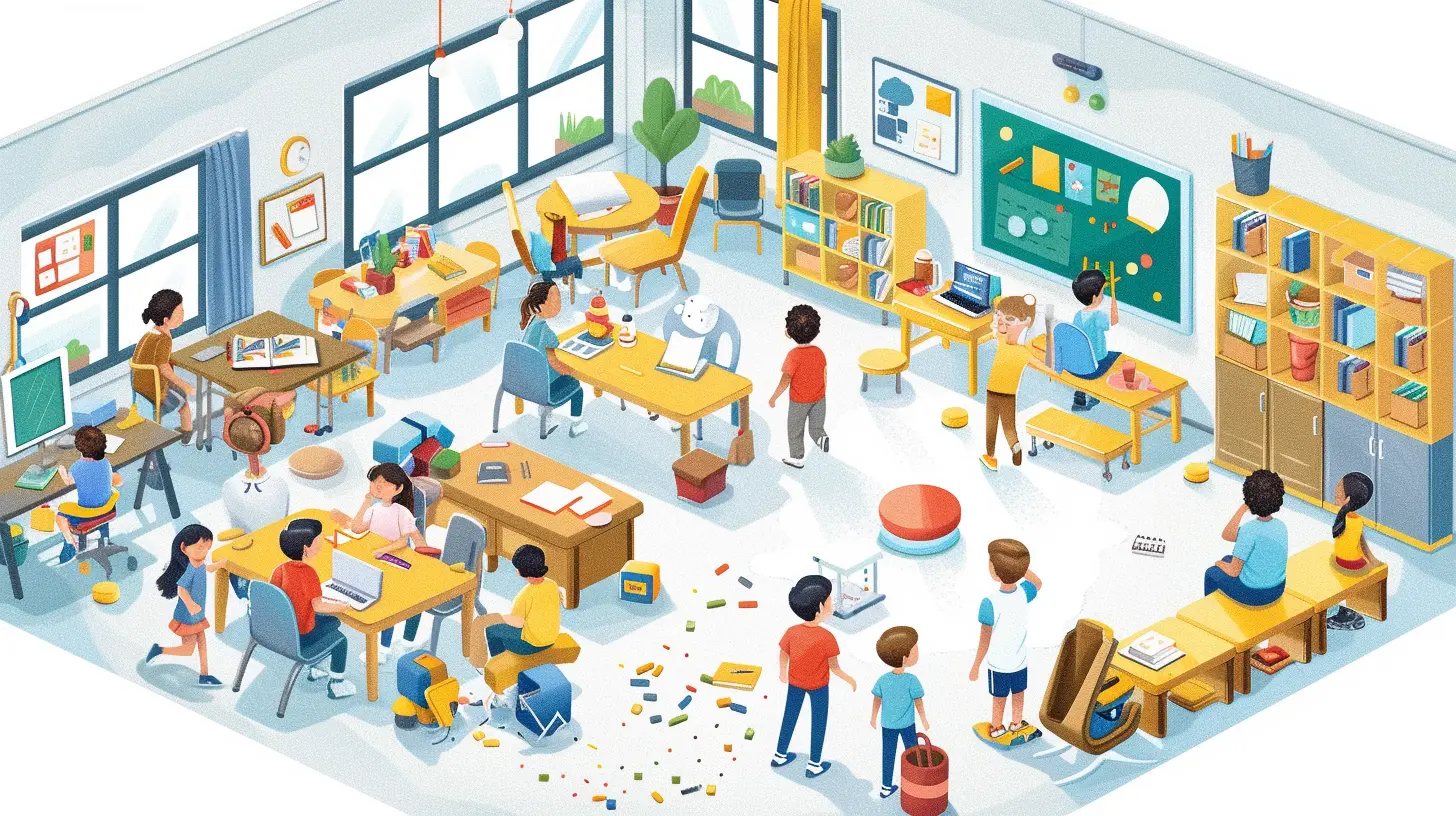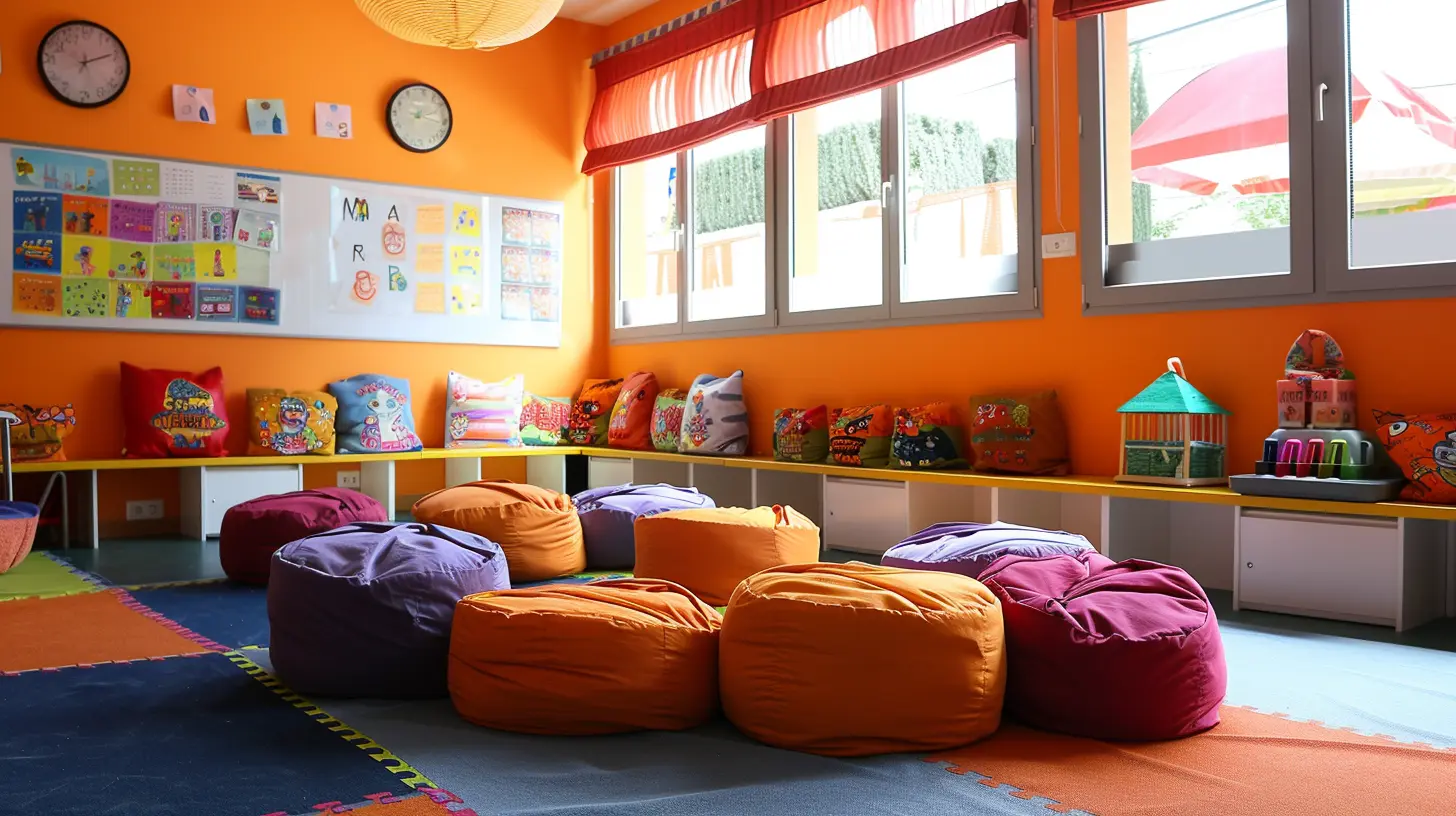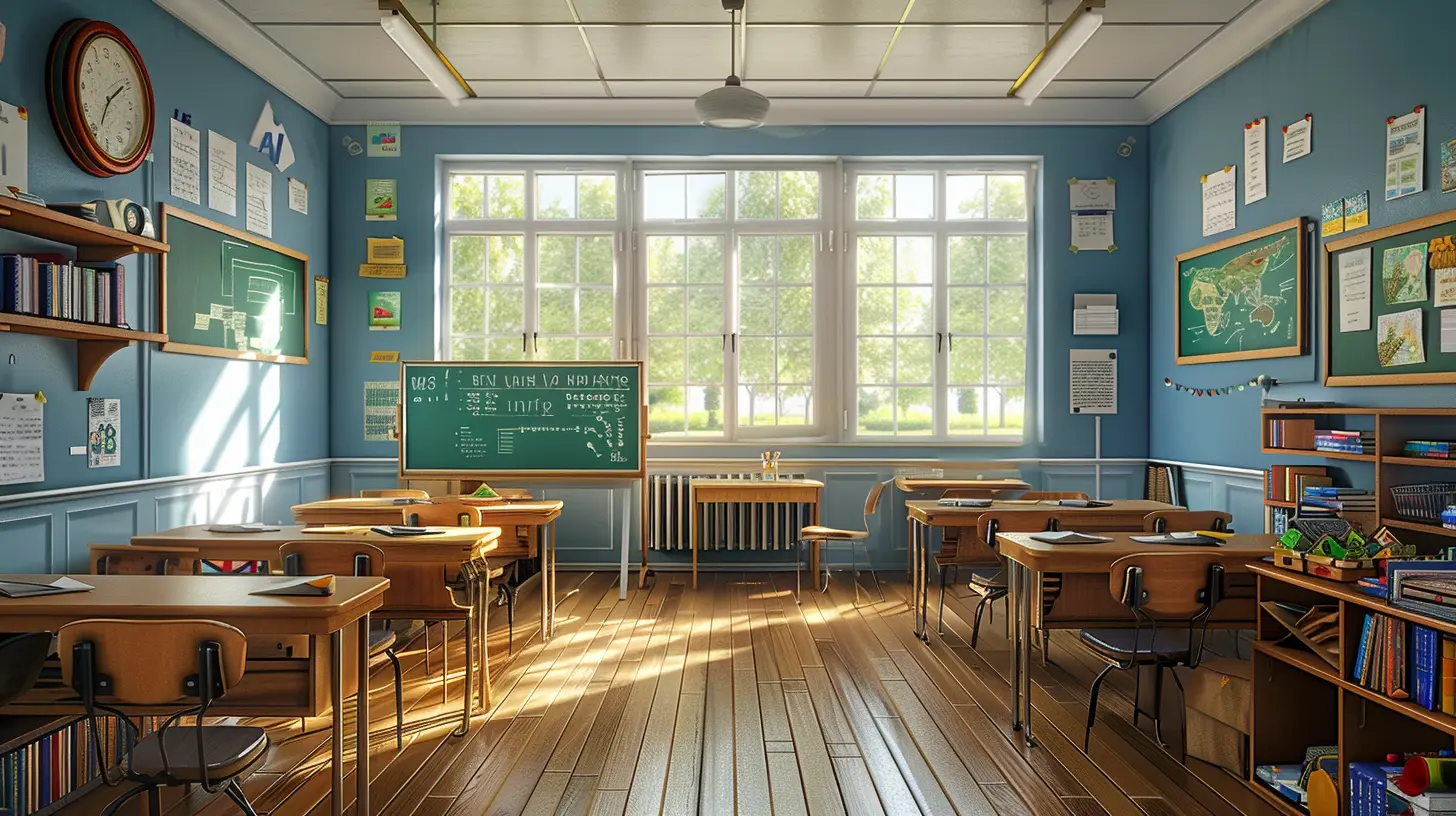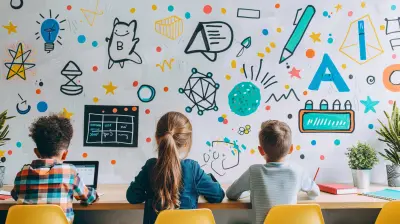22 March 2025
Ever walked into a classroom and thought, "Well, this is a bit of a maze!"? Maybe the desks are crammed together or there’s a clutter of furniture by the door. Believe it or not, the way a classroom is arranged can significantly influence student behavior. It’s one of those subtle yet powerful tools in a teacher’s toolkit that often goes unnoticed. But in reality, the physical layout of a classroom is a game-changer when it comes to managing behavior.
In this article, we’re going to dive deep into how the design and arrangement of a classroom can impact behavior management. Whether you're a teacher, parent, or simply curious about the dynamics of education, you'll find some useful insights that might surprise you!

Why Classroom Layout Matters
Let’s face it: kids (and adults) respond to their environment. Just think about how you feel in a cluttered room versus a neat and organized one. The same applies to students in a classroom. The space they’re in can either foster a sense of calm and focus or, on the flip side, create chaos and distractions.When a classroom layout is thoughtfully designed, it can encourage positive behavior, make transitions smoother, and even enhance learning. But if the layout is poorly planned, it can lead to disruptions, disengagement, and even frustration. So, yes, classroom layout matters—a lot more than we might think!
The Psychological Impact of Space
Let’s start with the psychology behind it. How we perceive space affects how we feel and behave. In a classroom, the layout can either make students feel comfortable and ready to learn or anxious and overwhelmed. A well-organized layout helps students feel secure and provides clear boundaries, which in turn promotes positive behavior.Imagine entering a classroom with wide, open spaces, where everything has its place. You’d feel more at ease, right? Now, picture a room where desks are haphazardly arranged, materials are everywhere, and the teacher’s desk is inaccessible. You’d probably feel a little stressed, uncertain, or distracted.
The same happens with students. When they're in a well-structured environment, they know what’s expected of them, and it’s easier for them to follow rules and routines. But in a chaotic environment? They’re more likely to act out or lose focus.

How Layout Affects Behavior
Now, let’s get specific. How exactly does the layout of a classroom influence student behavior? Let’s break it down into a few key areas.1. Desk Arrangement and Interaction
The way desks are arranged can have a profound impact on how students behave and interact with each other. For example:- Traditional Rows: Desks arranged in rows usually promote individual work and focus. This setup minimizes distractions because students are less likely to interact with one another. However, it can also feel a bit restrictive and limit collaboration.
- Clusters or Groups: Arranging desks in groups encourages collaboration and communication. This setup is great for group work and peer learning, but it can also lead to more off-task behavior if not monitored closely.
- U-Shaped or Circular Arrangements: These promote a sense of community and make it easier for students to engage in discussions. It also allows the teacher to move around and interact with students more freely, which can help in managing behavior.
The key here is flexibility. A classroom that allows for a variety of desk arrangements—depending on the activity—is likely to see improved behavior. Why? Because students aren’t stuck in one mode of learning. They have the opportunity to work independently, in groups, or as a class, which keeps them engaged and less likely to misbehave.
2. Teacher’s Accessibility
Another critical element of classroom layout is how easily the teacher can move around. If a teacher is stuck at the front of the room, it’s harder to keep an eye on what’s happening in the back. And we all know that students are more likely to act out when they think they’re not being watched!An effective classroom layout allows the teacher to move freely around the room, interacting with students and providing guidance when needed. When students know the teacher is nearby, they’re less likely to misbehave. Plus, the teacher can quickly intervene if a student is off-task or causing a disruption.
3. Clear Pathways and Movement
Let’s not forget about physical movement. Students, especially younger ones, need to move! If a classroom is cluttered or cramped, it can lead to frustration and restlessness. But if there are clear pathways for students to move around—whether it’s to sharpen a pencil, retrieve materials, or transition between activities—they’re less likely to feel confined or fidgety.In fact, many teachers use movement as a behavior management tool. For example, having designated areas for different activities (like a reading corner, a group work table, or a quiet zone) allows students to move with purpose, which can help them stay focused and engaged.
4. Visual Clarity
Ever heard the phrase "out of sight, out of mind"? It applies to classroom behavior too! If students can see everything that’s going on—whether it’s a tempting toy, a stack of papers, or a peer across the room—they’re more likely to get distracted.That’s why many teachers opt for a layout that minimizes visual distractions. For instance, placing desks so that students aren’t directly facing windows or doors can help keep their attention on the task at hand. Similarly, keeping materials and supplies neatly organized and out of immediate sight can reduce the temptation to play with them during class.
5. Zones for Different Activities
Creating different zones within a classroom is a brilliant way to manage behavior. Why? Because it sets clear expectations for what should happen in each area. For example:- Quiet Zones: A designated area for independent work or reading. In this space, students know they need to be quiet and focus on their tasks.
- Group Work Areas: A space where students can collaborate and talk. This helps prevent disruptions during whole-class instruction because students know there’s a place for talking and working together.
- Teacher’s Desk or Instructional Area: A zone where the teacher can give direct instruction or meet with students one-on-one. Having this area clearly defined helps students understand when it’s time to listen and pay attention.
By creating specific zones, teachers can guide student behavior without constantly having to remind them of the rules. The layout itself does some of the work!

The Role of Technology in Classroom Layout
In today’s modern classrooms, technology plays a huge role in learning. But how does it affect behavior management? Well, it all comes down to how technology is integrated into the classroom layout.For example, if students are using tablets or computers, it’s important to arrange the room so that the teacher can easily monitor what’s happening on the screens. This might mean placing devices in certain areas of the room or arranging desks so that the screens are visible from different angles.
Similarly, a layout that includes interactive whiteboards or projectors should be designed so that all students can see and engage with the technology. A poorly placed screen can lead to frustration, disengagement, and, you guessed it, behavior issues!

Flexibility and Adaptability
Here’s the kicker: there’s no one-size-fits-all solution when it comes to classroom layout. The key is flexibility. What works for one group of students might not work for another. That’s why it’s important for teachers to be willing to adapt the layout based on the needs and behaviors of their students.Maybe you start with desks in rows, but after a few weeks, you notice that students are struggling to collaborate. In that case, switching to a group arrangement might be the solution. Or perhaps you notice that a particular student is easily distracted by the window, so you rearrange the seating to help them stay focused.
The point is, classroom layout is not static. It’s something that can—and should—be adjusted over time to support positive behavior and learning.
Conclusion: Small Changes, Big Impact
At the end of the day, the physical layout of a classroom has a much bigger impact on behavior than we often realize. It’s not just about where the desks are placed or how much space there is; it’s about creating an environment that supports students' emotional, social, and academic needs.By taking the time to think about how the layout of a classroom can influence behavior, teachers can create a space that not only minimizes disruptions but also fosters a positive, productive learning environment. Whether it’s through effective desk arrangements, clear pathways, or designated activity zones, small changes in layout can lead to big improvements in behavior.
So, the next time you walk into a classroom, take a moment to look around. How does the space make you feel? And more importantly, how might it be influencing the behavior of the students inside?







Ariella McKeever
Ah yes, because rearranging desks will definitely solve all behavioral issues—who needs actual guidance when we have furniture feng shui?
April 2, 2025 at 10:25 AM